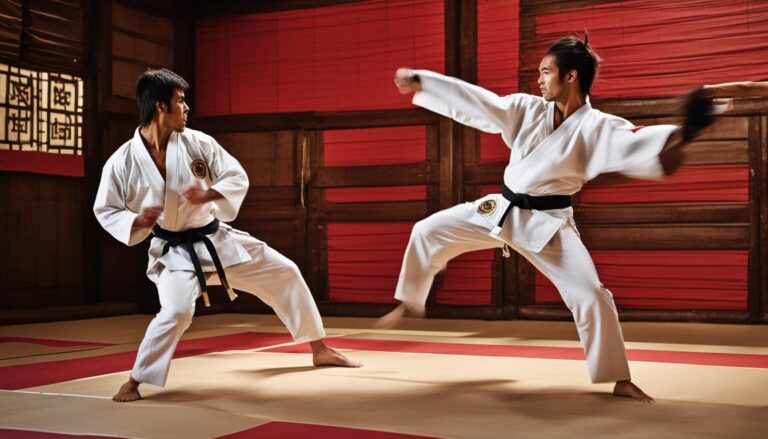In the world of martial arts, Tang Soo Do has become a globally popular form due to its practicality and effectiveness.
This Korean martial art, like most others, follows a belt ranking system. The different belts signify a student’s level of proficiency and skill as they progress through their journey in Tang Soo Do.
Tang Soo Do has ten colored belts and three black belt dans with four levels. The colors of the belts, in their particular order, represent the journey of the student as they progress through different levels of the art.
Contents
White Belt (10th Gup)
The white belt, symbolizing purity and innocence, is the first belt that a student receives when they commence their Tang Soo Do journey. It signifies the beginner’s lack of knowledge and understanding of the art.
Orange Belt (9th Gup)
The orange belt, the second in line, represents the student’s initial understanding of the basic techniques and growth in their training.
Green Belt (8th Gup)
The green belt is the third belt in the Tang Soo Do system, signifying growth and maturity in the student’s training.
Purple Belt (7th Gup)
The purple belt, the fourth, represents a student’s understanding and mastery of the basic techniques, indicating an increase in knowledge of the art and the refinement of their skills.
Blue Belt (6th Gup)
The blue belt, fifth in line, signifies a student’s proficiency in the basic techniques and readiness to undertake more advanced training.
Brown Belt (5th Gup)
The brown belt is the sixth belt, signifying the student’s readiness to move into advanced training, applying their knowledge of the art in practical situations.
Red Belt (5th Gup)
The red belt, the seventh, represents mastery of basic techniques and readiness to begin advanced training.
Cho Dan Bo and the first dan (The 1st Degree Black Belt)
The Cho Dan Bo rank, the first level of black belt in the Tang Soo Do system, also represents mastery of the basic techniques and readiness to begin advanced training, as does the first Dan rank, the second level of black belt.
This means that it’s time to put in a practical situation what the student learned until now.
Second Dan (2nd Degree Black Belt)
The second Dan rank, which is actually the third level of the black belt, after Cho Dan Bo and the first Dan, represents the student’s mastery of the art and their dedication to continuing their journey towards mastery.
Third Dan (3rd Degree Black Belt)
The third Dan rank, the fourth level of black belt, represents the student’s mastery of the art, dedication to continuing their journey towards mastery, ability to apply their knowledge in practical situations, and commitment to teaching and passing on their knowledge to others.
Besides the colored and black belt ranks, Tang Soo Do also has a Grand Master rank, the highest level of achievement in art.
Grand Masters are recognized for their exceptional skill and dedication to the art, playing an important role in preserving the traditions and teachings of Tang Soo Do.
Testing for Belt Ranks
To progress through the different belt ranks in Tang Soo Do, students must pass a test that assesses their knowledge and proficiency in the art.
The testing requirements vary for each belt rank but generally involve demonstrating proficiency in basic techniques, forms, sparring, and self-defense.
Students must also demonstrate a commitment to the principles of Tang Soo Do, such as discipline, respect, and perseverance.
Advancing through the belt ranks in Tang Soo Do requires dedication, hard work, and a commitment to the principles and philosophy of the art.
It is not uncommon for students to spend several years training before advancing to the next belt rank, and it can take years of training to achieve a black belt rank.
The belt ranking system in Tang Soo Do provides a clear and structured path for students to follow as they progress through their training.
The different colored belts and black belt ranks serve as milestones, providing students with a sense of accomplishment and motivation as they advance through the ranks.
Additionally, the belt ranking system helps to promote a sense of camaraderie and community within the Tang Soo Do community, with students who share the same belt rank often training together and forming close bonds.





